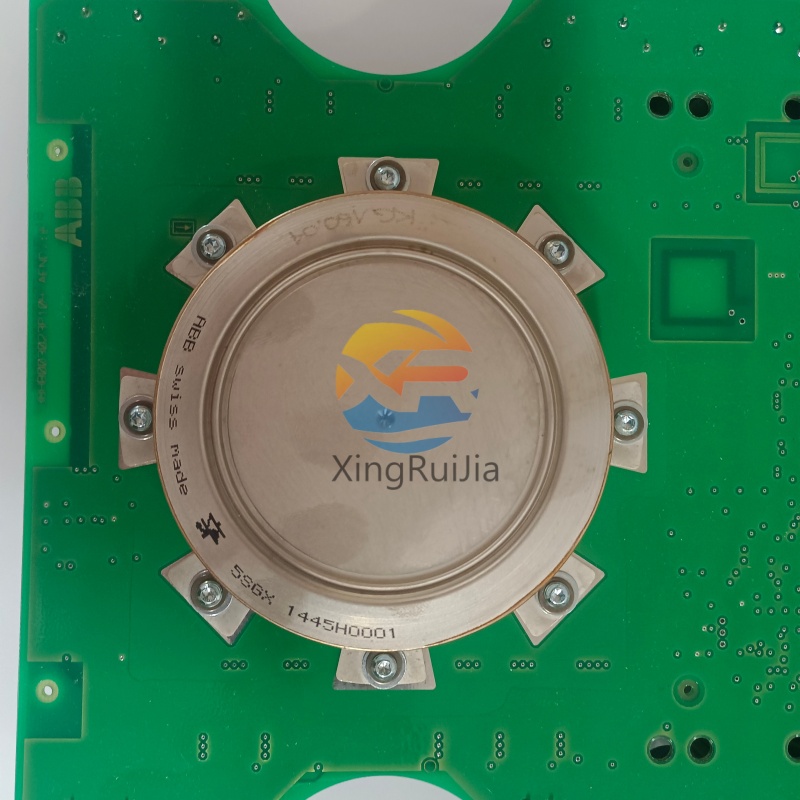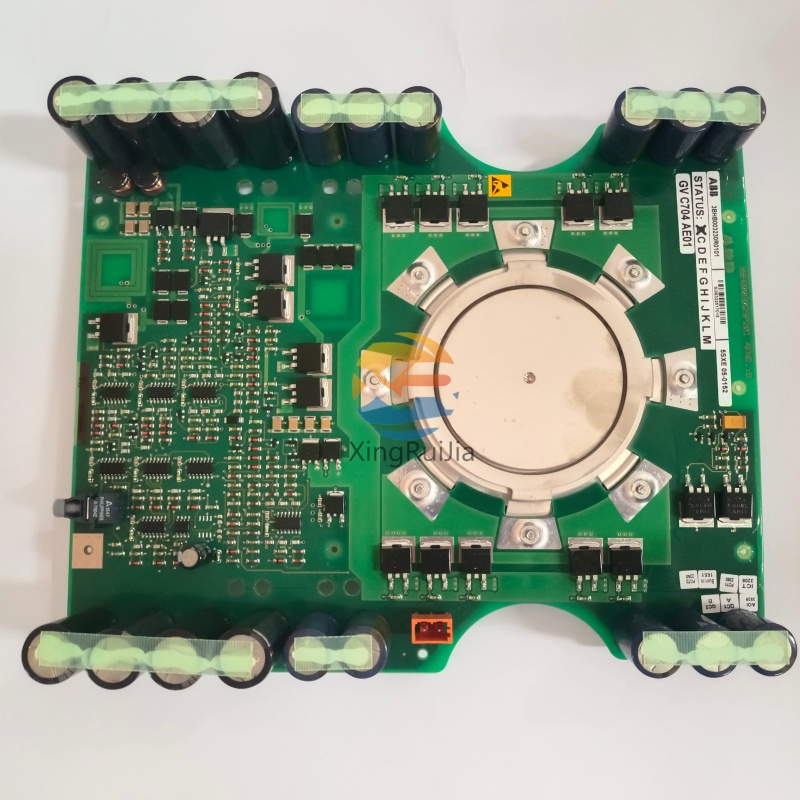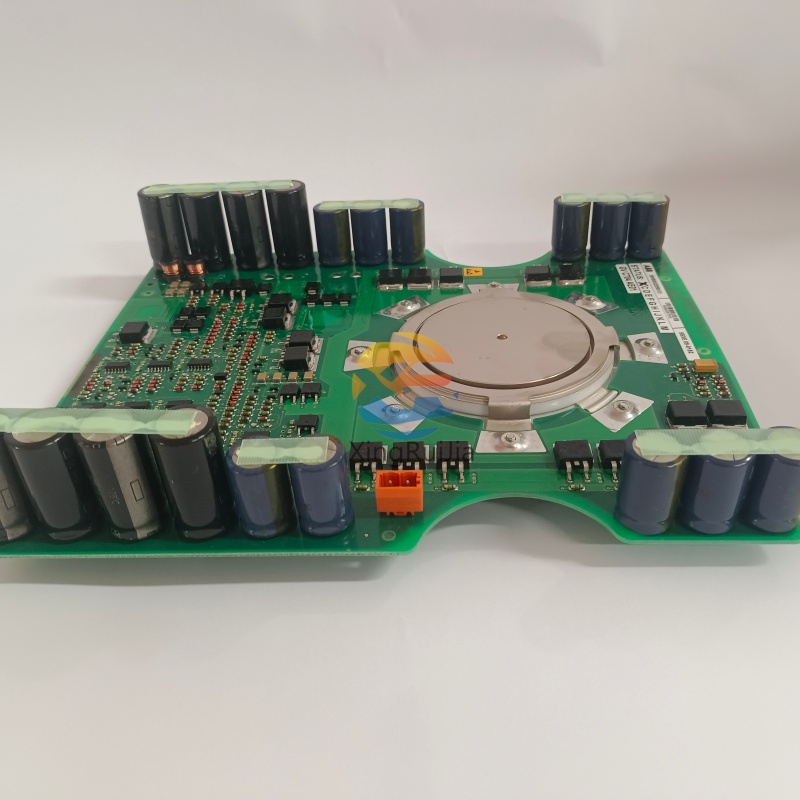The ABB GVC704AE01, 5SHX1060H0001, and 3BHB003230R0101 are critical industrial automation and power control components. They are not standalone products but specialized modules designed for integration into ABB's larger systems, specifically the AC 800M controller family and HVDC power conversion systems. Their primary function is to ensure precise control, reliable communication, and efficient management of high-power electrical processes in demanding industries like energy transmission, marine, and industrial manufacturing.

This article provides a detailed technical analysis of three specific ABB module codes, explaining their functionalities, applications, and importance within industrial automation and power electronics ecosystems. Understanding these components is crucial for engineers, technical procurers, and maintenance personnel in the energy and industrial sectors.
The three codes represent distinct components with different roles within an automation hierarchy.
1.1. ABB 3BHB003230R0101 - Controller Interface Module
Entity Type: Electronic Module / Communication Interface
Primary Function: This module acts as a critical communication link, most commonly associated with ABB's AC 800M series of programmable logic controllers (PLCs). It facilitates data exchange between the central processing unit (CPU) and other I/O modules or fieldbus networks (like Profibus, Foundation Fieldbus, or ABB's own AF 100/200).
Key Features: It typically provides electrical isolation, signal conversion, and protocol handling to ensure reliable and noise-free communication in electrically noisy industrial environments.
1.2. ABB GVC704AE01 - Controller or Control Board
Entity Type: Controller / Printed Circuit Board (PCB) Assembly
Primary Function: This code often refers to a specific type of controller or a main control board within a larger drive or automation system. It serves as the "brain" for a specific subsystem, executing control algorithms, processing sensor inputs, and generating output commands for actuators.
Key Features: It likely contains a microprocessor, memory, and various communication ports. Its design is optimized for real-time control tasks with high reliability and deterministic performance.
1.3. ABB 5SHX1060H0001 - IGBT Semiconductor Module
Entity Type: Power Semiconductor / IGCT or IGBT Module
Primary Function: This is a high-power semiconductor device, specifically an Insulated-Gate Bipolar Transistor (IGBT) or Integrated Gate-Commutated Thyristor (IGCT). It is the core switching component in ABB's renowned HVDC (High-Voltage Direct Current) and ACS 1000 medium-voltage drive systems. It acts as a high-speed, high-power electronic switch to convert and control electrical power.
Key Features: Designed to handle extremely high voltages and currents (typically in the range of several kV and kA). It is a key determinant of the system's efficiency, power density, and overall performance.
These modules are never used in isolation. Their value is realized within integrated systems:
Hierarchical Control: In a complex plant, the 3BHB003230R0101 interface module might be part of an AC 800M controller stationed in a control room. This controller sends setpoints and commands to a drive system, which internally uses the GVC704AE01 board for logic and the 5SHX1060H0001 IGBT modules in its power stack to actually modulate the energy sent to a motor or generator.
HVDC Application: In a high-voltage direct current transmission station, hundreds of 5SHX1060H0001 modules are stacked together to form valves that convert AC grid voltage to DC for long-distance transmission and back again. The control of these valves is managed by sophisticated controllers, which could utilize modules like the GVC704AE01.
The advanced nature of these components means they are deployed in mission-critical, high-value industries:
Energy Transmission & Distribution (T&D): Core components in HVDC and FACTS (Flexible AC Transmission Systems) installations for grid stability, long-distance power transmission, and interconnecting asynchronous grids.
Marine and Offshore: Propulsion drives and power management systems for large vessels like LNG carriers, cruise ships, and offshore drilling rigs.
Industrial Processing: Driving large compressors, pumps, fans, and conveyors in industries such as oil & gas, mining, water treatment, and chemical processing.
Renewable Energy: Integration of large-scale wind and solar farms into the main grid.
Technical Longevity: Industrial automation systems have lifespans exceeding 20-30 years. However, individual components can fail.
Obsolete Parts: Many of these modules are from previous generations and may be classified as obsolete or long-term service supply by ABB. This creates a vibrant aftermarket for reliable, refurbished, and tested components.
Quality Assurance: Sourcing these parts from reputable suppliers is critical. Counterfeit or poorly refurbished modules can lead to system failure, costly downtime, and even safety hazards.
Expert Support: Integration and replacement often require specialized knowledge, including firmware compatibility, configuration, and precise calibration.
Q1: Are these three modules compatible with each other?
A: Not directly. They are designed for different functions within ABB's ecosystem. The 3BHB003230R0101 is for controller communication, the GVC704AE01 is for control logic, and the 5SHX1060H0001 is for power switching. They are integrated into a larger system designed by ABB engineers.
Q2: Where can I find the technical manual or datasheet for these parts?
A: Official documentation is available through the ABB Library portal (library.e.abb.com) or by contacting ABB's customer support directly. Searching for the exact code often yields the correct document. For obsolete parts, specialized industrial automation parts suppliers may also provide technical support.
Q3: My module has failed. Can I replace it with a used one?
A: Yes, it is a common practice. However, it is highly recommended to source from a reputable supplier that provides tested, refurbished, and warranted components. Ensure the replacement module has the exact same article number and, if applicable, the same firmware version or revision code.
Q4: What is the difference between an IGBT and an IGCT?
A: Both are high-power semiconductor switches. IGBTs (Insulated-Gate Bipolar Transistors) are voltage-controlled and are typically used in high-frequency applications. IGCTs (Integrated Gate-Commutated Thyristors) are evolution of GTO thyristors and are current-controlled, offering very low conduction losses, making them ideal for very high-power applications like HVDC. The 5SHX1060H0001 is often associated with IGCT technology.
Q5: Why are these components so expensive?
A: They are engineered for extreme reliability, precision, and performance in critical applications. The R&D, high-quality materials, rigorous testing, and relatively low production volumes compared to consumer electronics contribute to the high cost. System downtime they prevent is often far more expensive than the component itself.
Q6: Can these modules be repaired?
A: Yes, specialized firms offer component-level repair services for complex PCBAs and power modules. This can be a cost-effective alternative to buying new, especially for obsolete parts. Repair involves advanced diagnostics, replacement of failed components, and full functional testing.